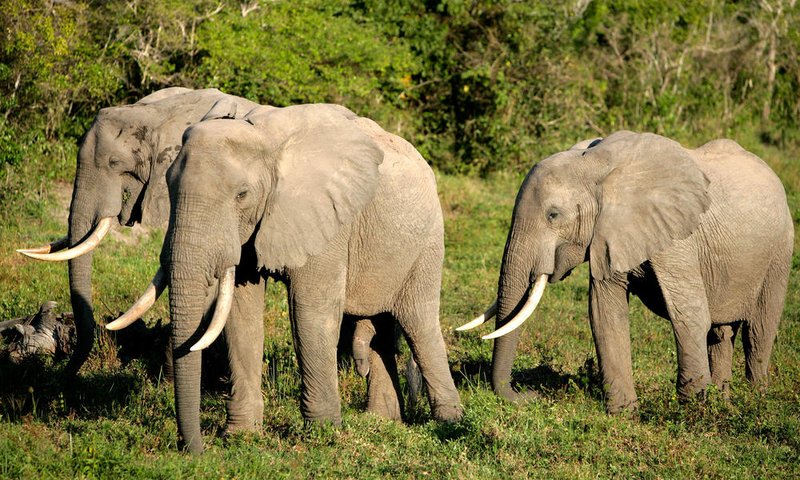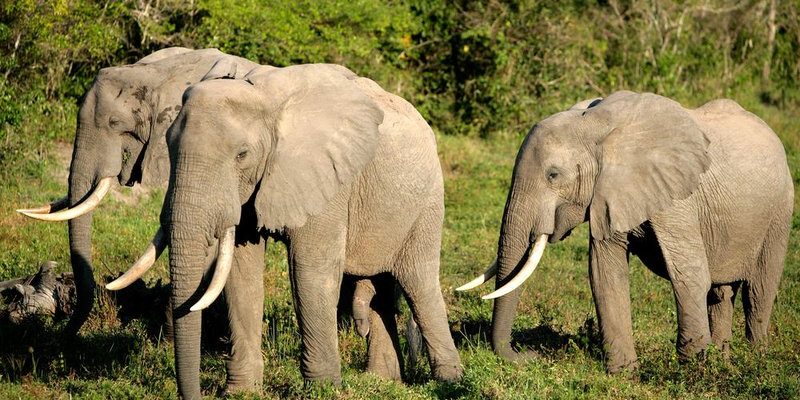
Raising young elephants isn’t just about feeding and sheltering them; it’s also about teaching them how to navigate their complex environment. From social interactions to finding food, mother elephants and their families work together to prepare the calves for life beyond the herd. Let’s dive deeper into the incredible world of African forest elephants and explore their unique parenting methods.
The Role of the Matriarch
In every elephant herd, the matriarch is the cornerstone of child-rearing. Typically, this is the oldest and wisest female in the group. She carries a wealth of knowledge, having lived through many seasons and experiences in the forest. This knowledge is vital, especially when it comes to locating food sources and water during dry periods.
The matriarch doesn’t just lead the herd; she is also actively involved in nurturing the young. When a calf is born, the entire herd rallies around to support the mother. It’s a little like having a village raise a child, where everyone contributes. The younger females often help care for the calves, allowing mothers to rest or forage for food. This collaborative care ensures that the calves receive plenty of attention and develop strong social bonds within the group.
You might be wondering, what happens if a calf strays too far from the herd? The matriarch’s keen instincts kick in, and she’ll often call for the calf, encouraging it to return to the safety of the group. It’s all about teaching the young elephants the importance of staying close to their family, especially in a world where safety from predators is a constant concern.
Nurturing and Feeding
One of the most significant responsibilities of the mother elephant is feeding her young. Calves rely on their mother’s milk for the first few years of life. This milk is rich in nutrients, providing the energy they need to grow and develop. Depending on their age, calves will consume about 2 to 10 liters of milk each day, which is quite the feeding frenzy!
As the calves grow older, their diet starts to change. Mother elephants gradually introduce them to solid foods, such as leaves, fruits, and bark. This transition is vital because it prepares the young elephants for life as herbivores in the wild. The mother guides the calves to preferred food sources and teaches them which plants are safe to eat.
Interestingly, the feeding process is also an opportunity for learning. When a mother finds a particularly tasty patch of foliage, she often encourages her calf to join her. Not only does this teach the young elephant about foraging, but it also fosters a bond between mother and calf. Strong relationships are essential for the emotional well-being of both the mother and the young elephant.
Socialization and Play
Social interaction is crucial for young elephants. African forest elephants are social creatures, and playtime is a vital aspect of their development. Calves can often be seen engaging in playful activities, such as chasing each other or rolling around in the mud. These playful behaviors are more than just fun; they help the calves develop essential skills, such as coordination and social bonding.
Within the herd, young elephants learn to communicate and interact with their peers. They practice vocalizations, body language, and even gentle aggression during play. These interactions teach them how to establish social hierarchies and navigate relationships within the group.
It may sound silly, but you can think of this socialization period as a sort of “school” for elephants. Just like kids learn important lessons on the playground, the calves are picking up various skills that will serve them well as adults. The bonds formed during playtime can last a lifetime, contributing to the herd’s cohesion and stability.
Protection from Predators
In the wild, young elephants are vulnerable to various threats, including predators like lions and hyenas. To combat this danger, the mother and other herd members employ several strategies. For starters, mothers are always vigilant, keeping a watchful eye on their calves. When a threat is detected, the herd employs a unique defensive formation.
Often, the adults will form a protective circle around the young, positioning themselves between the calves and any potential danger. This behavior showcases the herd’s strength in unity and highlights the importance they place on protecting their vulnerable members.
Moreover, vocalizations play a central role in this protective dynamic. Mothers use low rumbles to communicate with their young about danger, helping them understand when to be cautious. By learning these vocal cues, calves become adept at recognizing threats even before they encounter them directly.
Teaching Life Skills
As calves grow, their mothers take on the vital role of teaching them essential life skills. For instance, they learn how to find water sources and identify safe food options. This teaching process is gradual, with the mother guiding her calf along well-worn paths and showing them where to dig for roots or how to strip bark from trees.
Another key lesson is understanding their environment. Mothers often take their calves to different areas within their territory, teaching them the lay of the land. This exploration fosters independence while ensuring that the young elephants remain connected to the herd.
Here’s the thing: the learning process isn’t always smooth. Calves might stumble or get distracted, but that’s all part of growing up. The mothers are patient, providing support and encouragement along the way. Over time, the young elephants become more skilled and confident in navigating their world.
The Importance of Family Bonds
The family structure of African forest elephants is more intricate than it seems. These elephants have deep emotional connections that are crucial for their survival. Bonds between mothers and calves, as well as among siblings and other herd members, create a nurturing environment that fosters learning and resilience.
In fact, elephants are known for their emotional intelligence. They display affection toward one another, often touching or caressing with their trunks. This gentle behavior helps reinforce social bonds and provides comfort, especially in stressful situations.
As the young elephants grow older, they often maintain close relationships with their mothers and siblings. These family ties are significant not only for emotional support but also for survival. Adults in the herd share responsibilities, protecting and teaching the younger ones, which ultimately strengthens the herd as a whole.
The Challenges Ahead
While the nurturing practices of African forest elephants are remarkable, they face numerous challenges in the wild. Habitat loss, poaching, and climate change threaten their survival. This pressure can disrupt the delicate family structures and parenting practices that have been established over generations.
Conservation efforts are critical to ensure that these magnificent creatures can continue to thrive. By understanding how African forest elephants raise their young, we can advocate for their protection and support initiatives aimed at preserving their habitats.
The beautiful relationships and nurturing behaviors displayed by these elephants remind us of the significance of family and community. Just like humans, they rely on one another to navigate the challenges of life, showcasing the importance of support and cooperation in the animal kingdom.
In conclusion, African forest elephants exemplify what it means to raise young in the wild. Through the guidance of the matriarch, the nurturing process, and the strong family bonds they create, these elephants ensure their young grow into confident and capable adults. By watching over each other and sharing experiences, they teach us invaluable lessons about care, compassion, and community. As we work to protect their future, we should remember the importance of these connections they hold dear.

